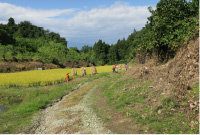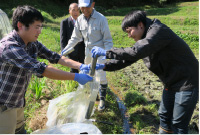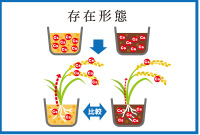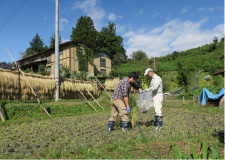Speciation Radiochemistry
It is very important to accurately measure radionuclides in the environment so that we can better predict their behavior. Knowing their behavior helps predict their potential effects to humans and the environment. However, most radionuclides can occur in several different forms within the environment, and these forms can have widely different behaviors, even if the different forms occur for the same radionuclide. At the IER, we are taking "existing form" in a broad sense. We study radionuclides based on their bonding states and the environmental substances in which they are associated. Often we use advanced methods to separate the various forms in which a radionuclide resides. Once the various chemical forms of radionuclides are identified and quantified, we can make a better estimate of their environmental transport and fate. This knowledge is critical to improved human and environmental risk analyses.
 |
 |
 |
Activity Log
 |
Oct. 12, 2016 | |
| Sampling at Towa, Nihonmatsu City and Iino at Fukushima City We collected paddy-rice plants and soil in cultivated fields of Nihonmatsu City and Fukushima City, in cooperation with farmers from Towa district and Iino district. In this research we quantify what fraction of the total radioactive cesium within the soil will be taken up easily by rice plants ("phytoavailable forms"). This is done using various chemical processes to separate the forms of radioactive cesium existing in the rice paddy soils. We will report the results from our research to the people who cooperated in the study, and then present the results at a scientific conference. |